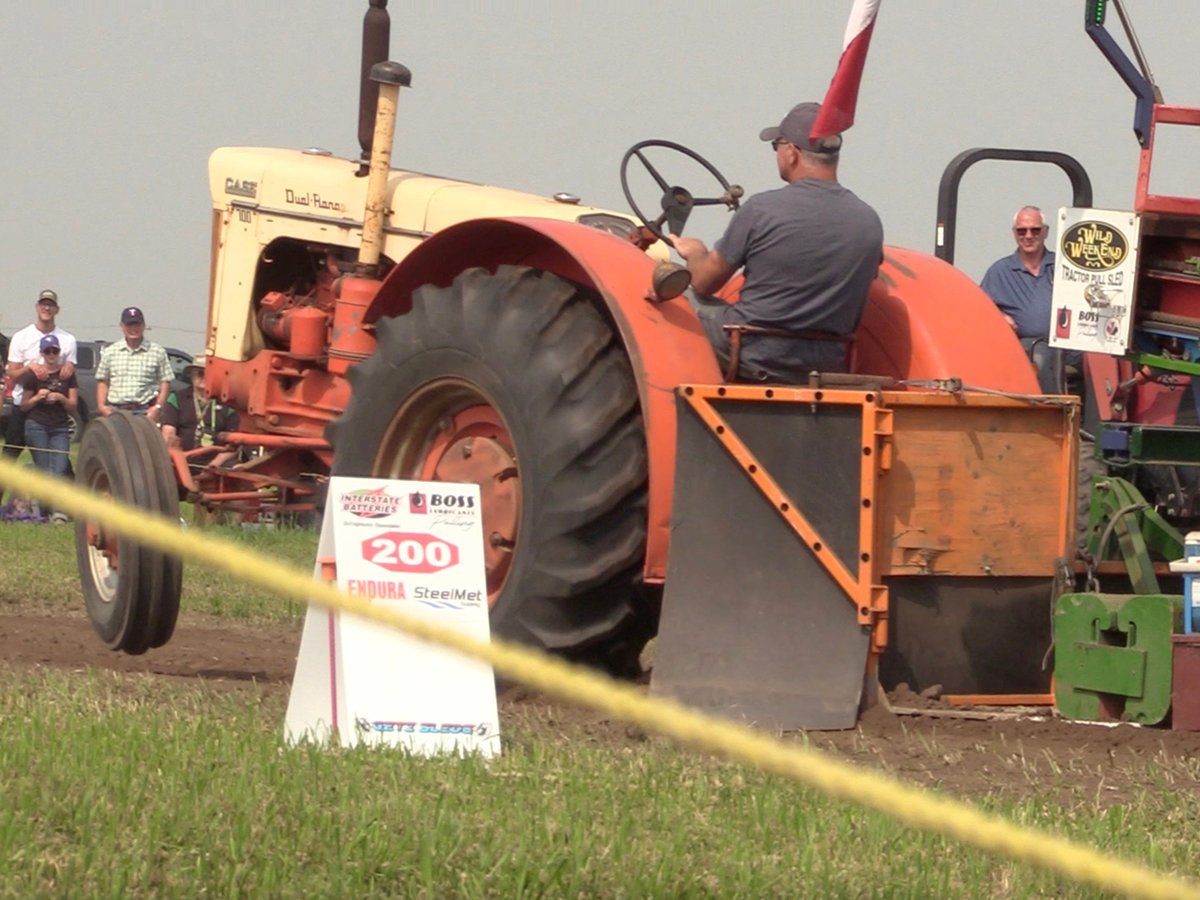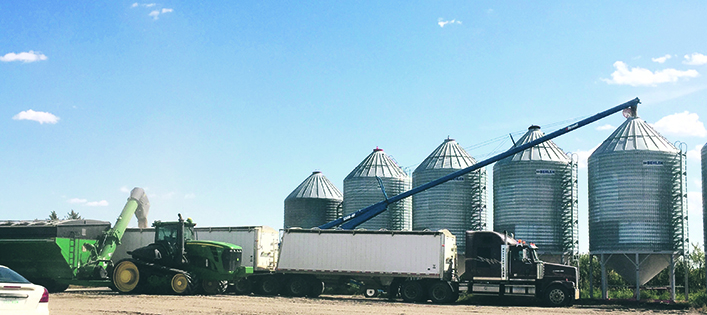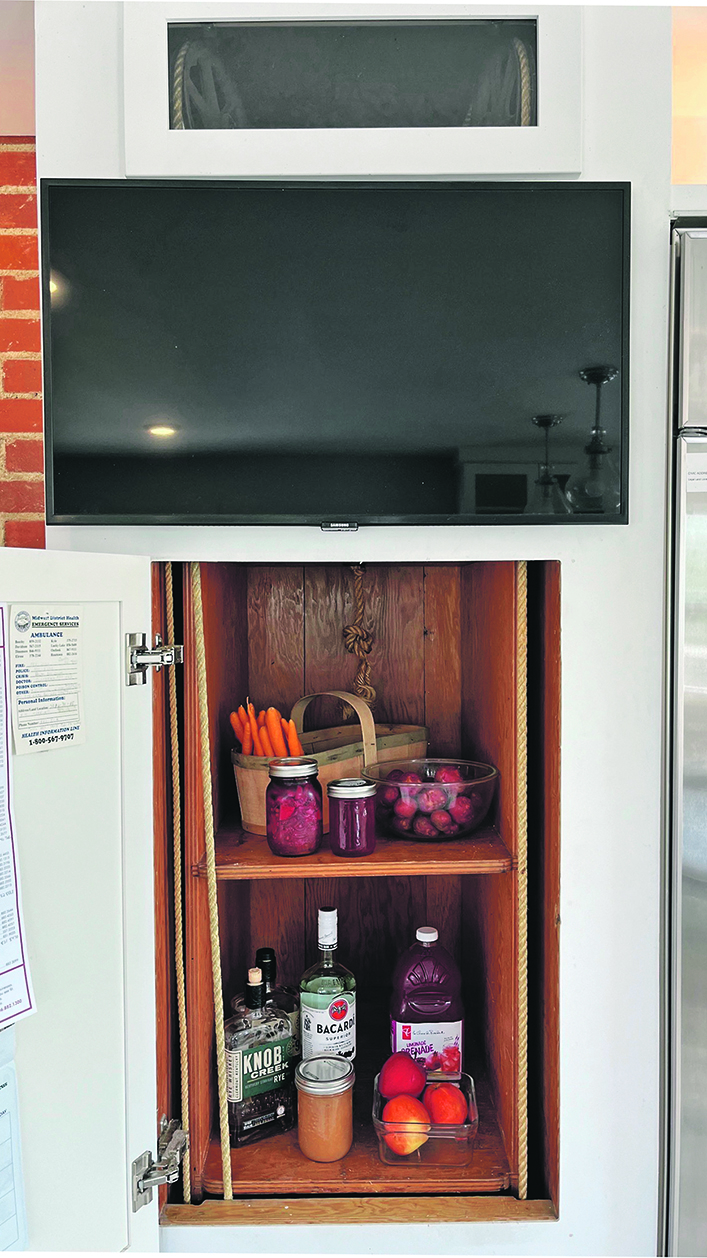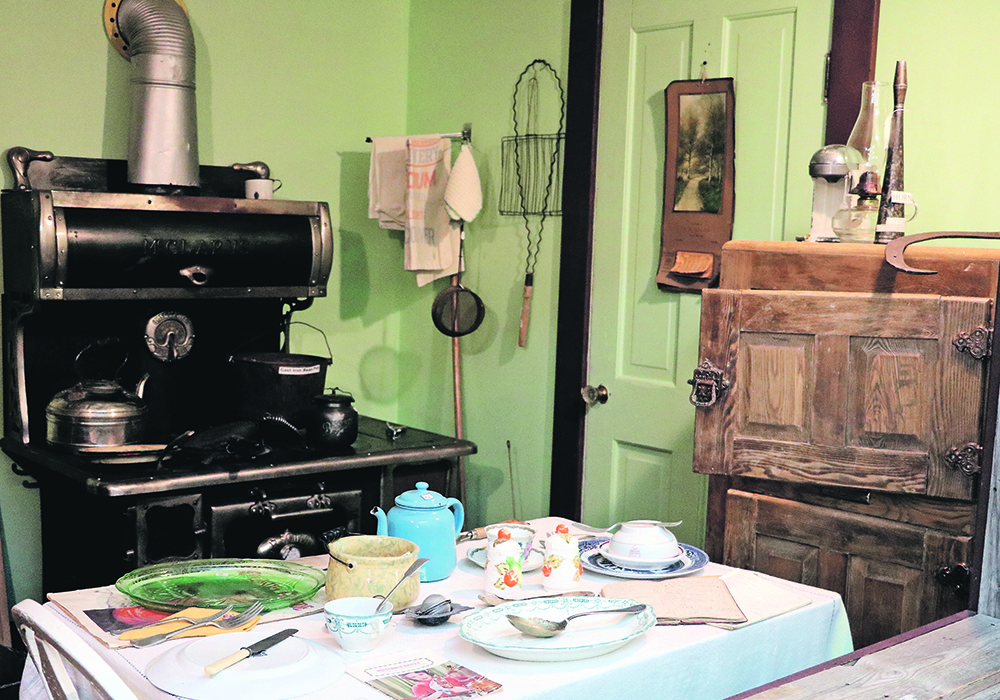As the celebration of the Western Producer’s 100th anniversary year ends, it is interesting to look at comparisons from the 1920s to the 2020s.
According to Statistics Canada, in 1921 there were 119,451 farms in Saskatchewan. In 2021 there were 34,128. The average farm size was 369 acres in 1921 and in 2021, the average Saskatchewan farm was almost five times larger at 1,769 acres.
These statistics alone illustrate a rural landscape in the 1920s that had numerous farm families living close enough together to create communities for businesses, schools, churches and social interaction. Grain elevators were built 10 to 15 kilometres apart, a distance that was a good day’s journey for a farmer and horse with a full load, so most towns had at least one elevator.
Read Also

Vintage power on display at Saskatchewan tractor pull
At the Ag in Motion farm show held earlier this year near Langham, Sask., a vintage tractor pull event drew pretty significant crowds of show goers, who were mostly farmers.
Today, many small communities have disappeared and education, health and commercial services are consolidated in larger communities that are 50 to 100 km apart.
Transportation in the 1920s was best suited to a horse and wagon or sleigh as most roads were no more than trails through the fields. They were not graded, gravelled or paved.
In the later 1920s, farm trucks and tractors were being purchased for farm use and cars were becoming popular. During the 1930s, cars were being pulled by horses because fuel was too costly.

In the 2020s self-driving tractors and combines create straight furrows and allow farmers to watch computer screens and gauges for equipment and grain monitoring while in the driver’s seat. A 21st century concern is how the push for electric vehicle adoption will be practical in rural communities and on farms.
The Dominion Land Survey system for homesteading provided for townships that were six miles square, and each square mile was a section or 640 acres. An iron post was driven into the ground at the northeast corner of every one-mile square or section.
Road allowances were to the north and east of the iron monuments. East-west road allowances were every two miles apart going north from the U.S. border or 49th parallel. North-south road allowances were only one mile apart.
By 1921, there were 340,000 km of road allowance in Saskatchewan. Not all of these roads were built, but in 2021 the province had more than 250,000 km of roads, the most road surface of any province.
When the metric system was introduced in Canada in the 1970s, kilometers and hectares became very confusing in the rural countryside where land distances were based on a neat and tidy system of miles and acres.
An Angus Reid Survey in 2017 showed that Canadians used both metric and imperial systems. It reported that 74 per cent of Canadians still used acres in measuring a large piece of land.
Bison once roamed freely across western North America. It has been estimated that 200 years ago, there were about 30 million animals. Unfortunately, they were killed almost to extinction. Through conservation programs in Canada and the U.S., small herds were maintained.

Now there are numerous herds and an effort is being made to establish herds on First Nations land. In North America in 2017 there were 392,000 bison. An international goal is to increase this number to one million animals.
During the 1930s, there was a need for activities for rural youth so the University of Saskatchewan Extension Service sponsored Boys’ and Girls’ clubs that focused on livestock and gardening. The Depression restricted what many girls and young women could do, so Farm Girls’ Camps, Home Craft Clubs and three-day sewing courses were organized.
In 1952, the Boys and Girls clubs were combined and joined with Canadian 4-H clubs. Today, 4-H Canada is one of the most respected positive youth development organizations in the country, with more than 17,000 members, close to 7,000 leaders and more than 350,000 4-H alumni across Canada.
In an era when there were few telephones and radios and no televisions, cellphones or internet, the weekly farm newspaper provided reading material for isolated farm families. International, national, and provincial news items along with market and weather reports, innovative ideas, how-to instructions for common farm problems and a large, classified section earned the Western Producer the reputation of being the “farmer’s bible”.
Also within its pages were features for children and youth and encouragement and practical information for farm women.

In the 21st century, the tradition of providing news and information to prairie farmers and their families continues in new and unique ways. In addition to a smaller printed newspaper, the Western Producer has a strong online presence with a website, electronic newsletters, digitally archived issues and online classifieds.
It is also part of Ag in Motion, a unique three-day outdoor farm expo where farmers, industry leaders and agricultural experts come together at Discovery Farm Langham, just north of Saskatoon.
Technology has transitioned farming and farm living from intensive hard physical labour to a focus on knowledge and the management of time and labour. Rapid advancements in equipment, crops, fertilizers, pesticides and laws require a constant focus on education.
Caring for farm animals, pitching hay, cleaning barns, hauling water to the animals and house, and carrying out household wastewater and sewage all required great physical effort in years past. Now most animal feed and waste water are moved by tractors or equipment, and household running water and septic systems, aided by electricity, require minimal effort.
During the 1920s, the railways ran “harvest specials” in the fall to take as many as 50,000 unskilled and semi-skilled labourers west to help with the harvest.
In the 2020s farmers are still searching for farm workers.
Isolated rural women longed for social interaction with other women so organizations such as Homemakers Clubs, later known as Women’s Institutes, and United Farm Women flourished. These groups were also effective in lobbying for health, education and community improvements.
Most of these organizations have disappeared as travel and communication have improved and priorities have changed. Today, many farm women take active roles in decision making, marketing and operation of the farm. The 2021 Census of Agriculture found that 30.4 percent of Canada’s farm operators were women.
Betty Ann Deobald, one of The Western Producer’s TEAM Resources columnists, will write a monthly column for the next year examining rural life in each decade of the last century.


















